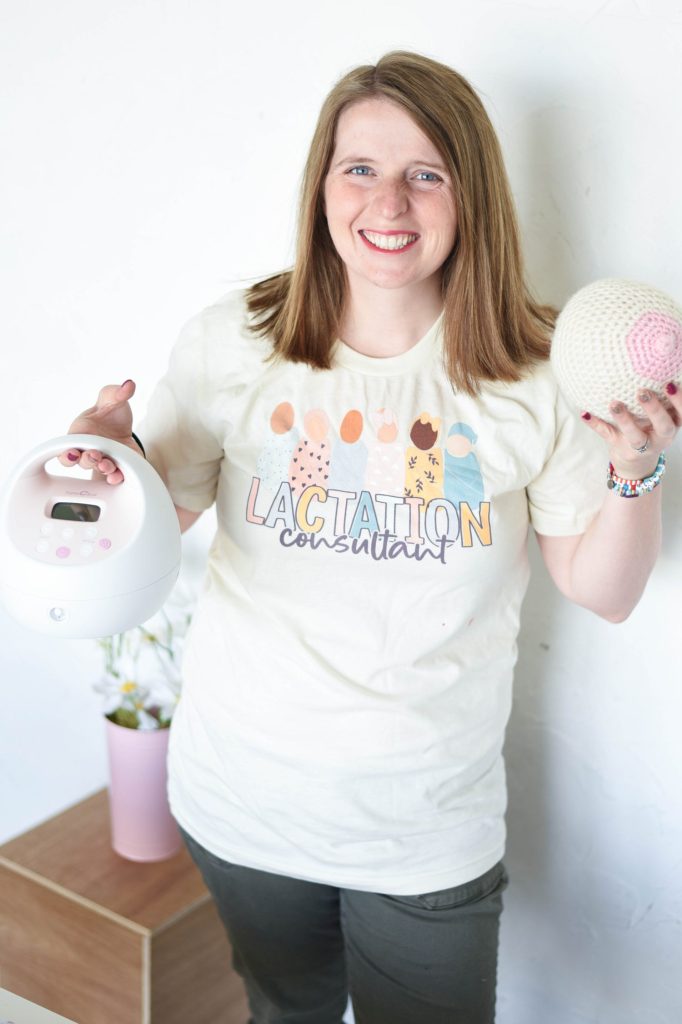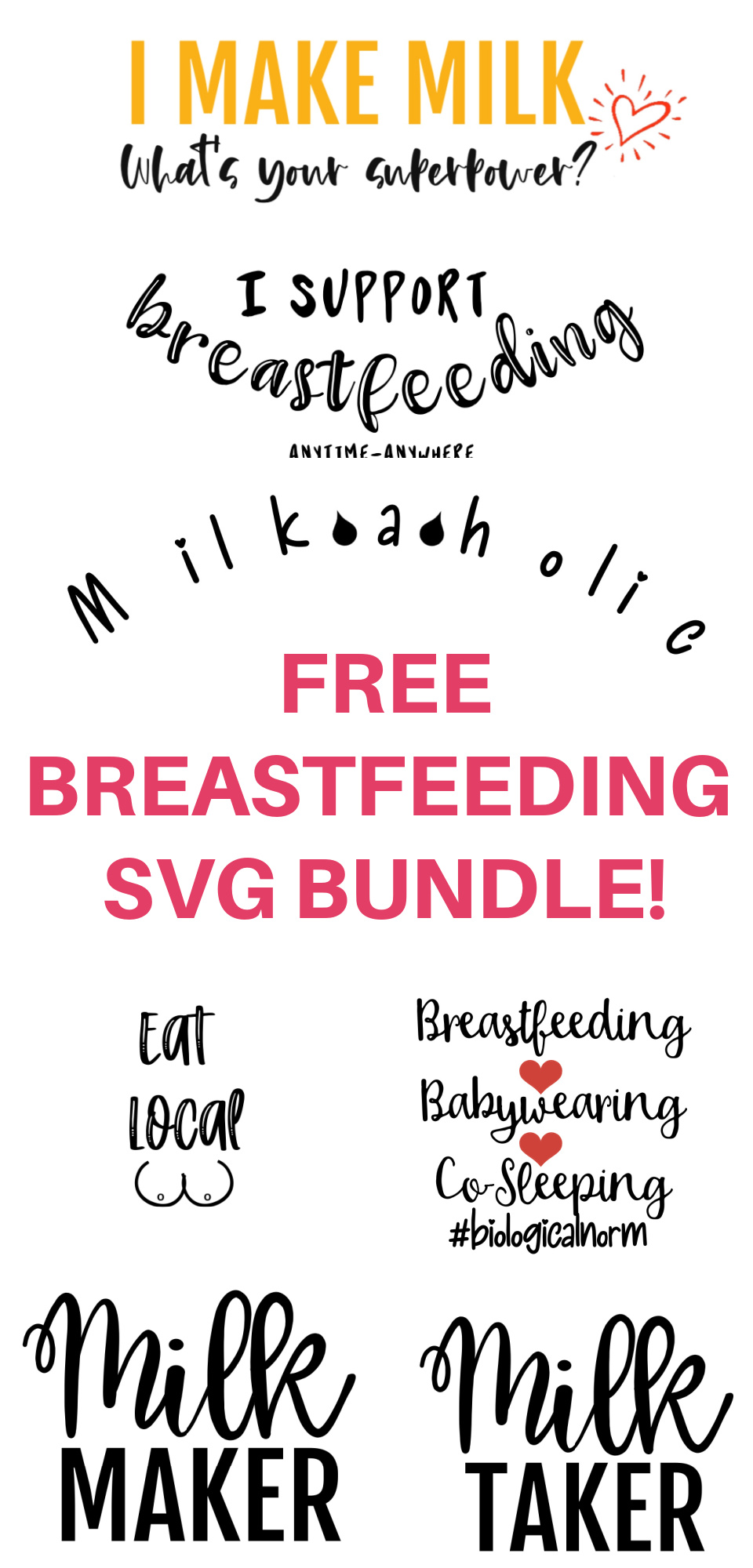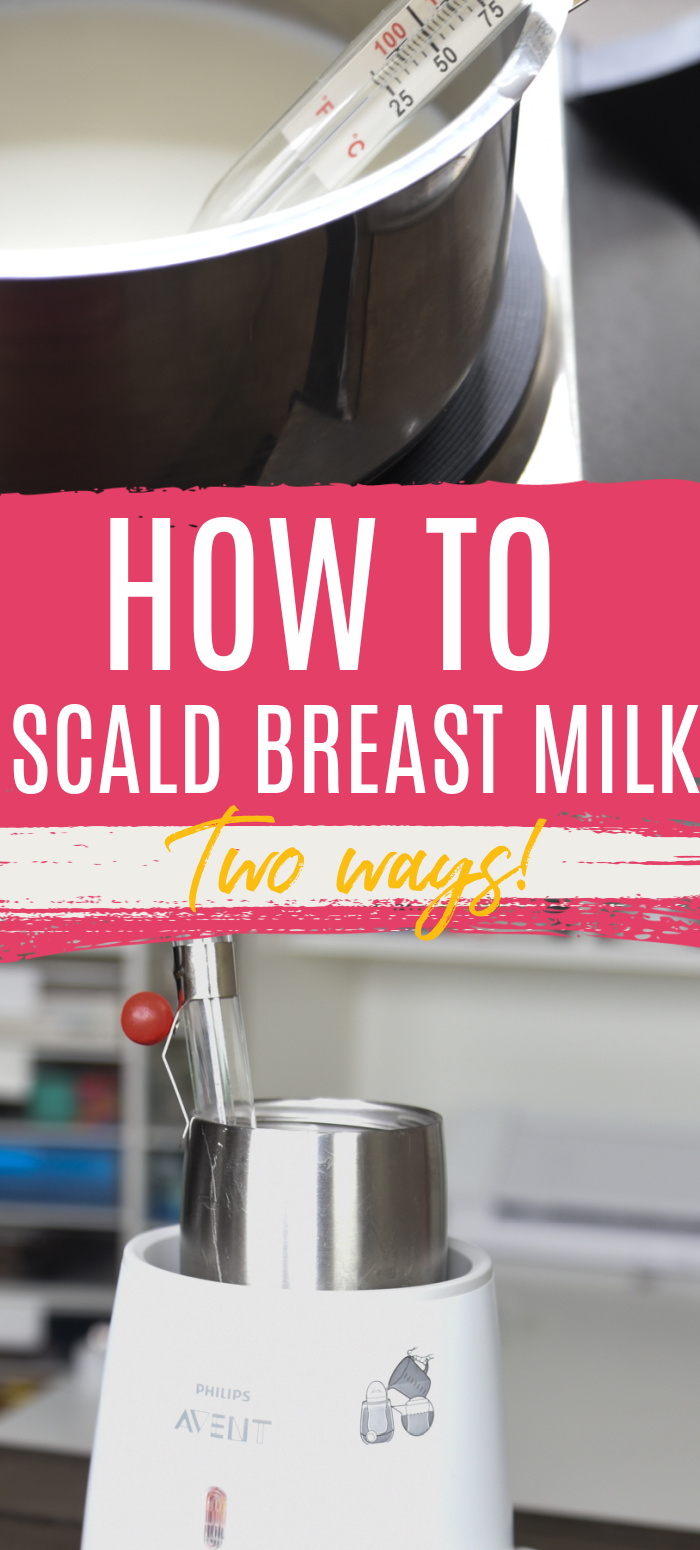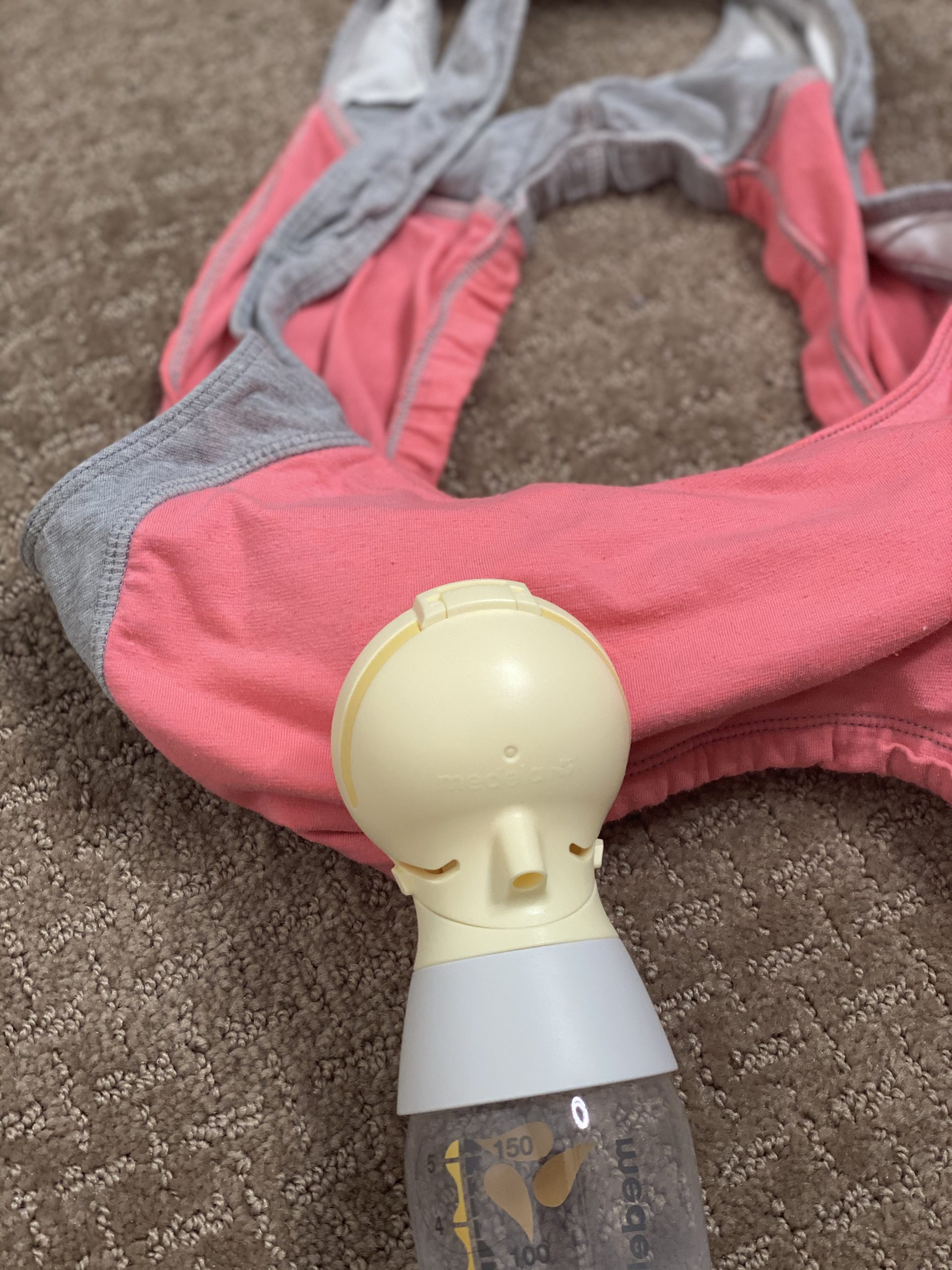Many new families choose to use both bottles and breastfeed their babies. Combo feeding can be a great option when approached in the right way.
The biggest issue I see as an International Board Certified Lactation Consultant is that many breastfeeding mothers face when their baby develops a preference for bottle feeding over breastfeeding.
This can be disheartening and frustrating, but it’s important to know that it is possible to reverse this preference and continue your breastfeeding journey successfully.
Reasons Why Babies May Prefer the Bottle Over the Breast
Faster Flow Rate:
Bottles often provide a quicker and more consistent flow of milk compared to the breast, which can be more appealing to some babies. Using a flow rate faster than what the baby is getting at the breast can make it easy for them to prefer the bottle.
I generally recommend using the slowest flow nipple you can find. Not all bottles have a slow-flow nipple, so you may need to experiment. I share my favorite bottle recommendations in this article, and you can also grab my bottle guide below.
<div class="grow-inline-subscribe-widget-1c327999-a18d-405a-a1e3-c55885e95a8a"></div>Silicone Preference:
When a young baby has early exposure to the bottle – especially without regular exposure to the breast- they might prefer the silicone feel of the bottle nipple. This can interfere with a desire even to try to breastfeed.
You can overcome this with some work to help your baby realize the breast is a happy place where they can get milk. Some moms find nipple shields to be helpful in this situation as they gently guide the baby back to the breast, but I would recommend working with an IBCLC when doing this.
Ease of Feeding:
Bottle feeding can be less effortful for babies, especially if they have difficulty latching onto the breast. If your baby is uncomfortable at the breast for any reason or can’t maintain a proper latch, bottle feeding might feel easier for them. Addressing the underlying cause of the discomfort at the breast is the first step.
I have seen many babies struggle to breastfeed due to tension in their body. I find that chiropractic care with a provider trained in infants can make a difference.
Schedule and Routine:
Babies might become accustomed to the predictability of bottle feeding if breastfeeds are not consistent.
Maternal Milk Supply:
If a mother has a low milk supply, the baby may become frustrated at the breast and prefer the bottle where milk is readily available. Low milk supply can be tricky to navigate but not insurmountable.
Letdown Issues
If you have an overly fast or overly slow letdown, this can make breastfeeding difficult. You can use different techniques to help with both of these issues.
I talk a lot about bottles and the issues mentioned above in Fuss-Free First Year. This is a great resource for providing you with answers to all your breastfeeding questions from first latch to last.
Tips for Reversing the Preference from Bottle to Breast
Paced Bottle Feeding:
Paced bottle feeding is a method that makes bottle feeding more similar to breastfeeding. It encourages the baby to use different muscles and to eat more slowly. This allows your baby’s brain and stomach to stay in sync and also to slow the flow.
Here is a great article on how to bottle feed a breastfed baby.
Make the Breast a Happy Place:
Increase bonding and stimulate breastfeeding instincts by holding your baby skin-to-skin as often as possible and making the breast a happy place for them to be. If you or your baby is feeling a lot of stress surrounding latching, this can make breastfeeding more difficult.
I would have the baby be at the breast as much as possible for purposes other than breastfeeding so you both can experience the positive flow of oxytocin.
Address Latch Issues:
A poor latch can make breastfeeding uncomfortable and ineffective. Sometimes simply changing your approach to latching and positioning can make a big difference in how your baby feeds at the breast. If you aren’t feeling confident in your latching technique, I have a great latching video in Fuss-Free Foundations.
Take a Bath Together:
This can be a really calming experience for both of you, and it’s a great place to try and latch in a more low-key enviornment. I’ve seen some mothers have succcess with rebirthing techniques.
Offer the Breast When Baby is Calm:
Try breastfeeding when your baby is relaxed and not overly hungry. Focus on attempting the breast in a quiet alert or just barely waking state. This can make the experience more positive for both of you. If a baby is already resistant to the breast and is really hungry, this can make breastfeeding even more difficult.
Limit Bottle Feeding:
Gradually reduce the number of bottle feeds and offer the breast more frequently to encourage your baby to reacquaint themselves with breastfeeding. I don’t suggest withholding food from your infant but sometimes simply decreasing the exposure to the bottle can help.
Use a Breastfeeding Supplementary:
Supplemental nursing systems (SNS) are a great way to engage the baby at the breast. They can be a tad cumbersome, but they can eliminate the need to triple feed and help your baby to gain more confidence in the breast being a place that they actually get milk. They are often used with low milk supply, but I’ve seen them successful with breast refusal cases as well.
Here are two SNS that I recommend. The first is good for smaller babies and amounts of milk, the second is ideal for larger amounts.
- Parent Set Lactation Aid (under 2 ounces)
- Supplemental Nursing System for Multi-Use Feeding (up to 3.4 ounces)
Increase Milk Supply:
If your child is refusing to nurse due to supply issues, working to increase your milk flow may help. A higher milk supply can make breastfeeding more satisfying for your baby. Not all milk supply issues are easily fixable and are best approached with the support of a lactation consultant.
Be Patient and Persistent:
Reversing a bottle preference can take time. Be patient and consistent with your efforts. We often see very small steps forward with breast refusal cases, but the small efforts often build up overtime.
Work With a Professional
This article is meant to give general advice – a personalized approach with a professional can make all the difference. My team is available virtually to help you navigate any part of your breastfeeding journey – be sure to book your consultation here.
More Articles You May Enjoy:
- 8 Factors for Low Milk Supply
- Expressed Breast Milk Bottle Calculator
- When to Introduce a Bottle to a Breastfed Baby








